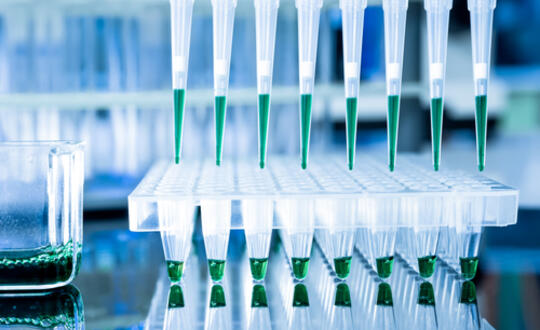Liquid Biopsy and Next-Generation Sequencing Combined: Legal Implications?
Aug 11 2020
The Food and Drug Administration’s approval of Guardant Health’s Guardant360 CDx assay marks a new era for genetic mutation testing in cancer treatment. On August 7, 2020, the FDA approved the first diagnostic test that combines two cutting-edge technologies — liquid biopsy and next-generation sequencing (NGS) — to guide cancer treatment decisions.
Most of us are familiar with the concept of biopsies being used to diagnose cancer. For patients, biopsies can involve the use of long needles, or even surgery. A biopsied tissue or fluid sample is placed on slides, stained, and reviewed by pathologists. Such biopsy/pathology-based diagnosis has several limitations. First, biopsies are sometimes not feasible due to tumor location, patient condition, etc. Second, biopsies often cannot obtain enough tumor cells to make a diagnosis. Third, even if enough tumor cells are present, the diagnosis may vary depending upon the skill and experience of the pathologist. Pathology is not just a science, but an art form. Pathologists frequently disagree when analyzing sizes, shapes, and colors of cells, cellular organelles, and how cells are placed relative to one another.
Enter liquid biopsy. Liquid biopsy uses a blood (or fluid) sample to test for tumor DNA, either in the form of circulating tumor cells (CTCs) or small pieces of DNA known as cell-free DNA (cfDNA). It can be less invasive, more sensitive, and more objective than conventional biopsy, overcoming the limitations discussed above. Combining liquid biopsy with NGS, the Guardant360 CDx assay simultaneously detects mutations in 55 tumor genes, rather than one gene at a time, Guardant claims. This can lead to a shortened wait time for starting mutation-directed treatment.
Long-standing efforts led to this breakthrough. Scientists have long known that cancerous tumors can shed cells into the blood stream. In 1869, an Australian doctor named Thomas Ashworth first described CTCs in the blood of a cancer patient. Dr. Ashworth’s discovery led to the understanding that cancer can spread by tumor cells moving through the bloodstream to other parts of the body. Researchers first identified cfDNA in 1948, but cfDNA may or may not be related to a cancer, and it took many years for researchers to be able to distinguish whether cfDNA found in a patient’s blood was related to a cancer or some other condition. In 2000, the first liquid biopsy for detecting CTCs was introduced. In June 2016, the FDA approved the first liquid biopsy for EGFR mutations for a targeted therapy drug Tarceva® (erlotinib) for lung cancer patients.
What legal implications do liquid biopsies have? A liquid biopsy, and the spectrum of genetic mutations discerned, can help to (1) identify the primary site of a cancer, (2) identify the cell type of the cancer, (3) determine a directed treatment for the cancer, (4) suggest cause(s) of the cancer, and (5) identify the stage of the cancer at the time of the blood test. Mutation diagnosis may reveal a possibility of other genetically-linked diseases in the patient, or an elevated cancer risk in other family members. All of these can be important in malpractice and product liability lawsuits.
A blood specimen is much less invasive than a biopsy, and could be obtained either from a client or through a compulsory medical examination in the course of litigation. For decades, the tissue has been the issue, with competing pathology experts testifying about pathology specimens. However, with liquid biopsy, the diagnosis may become less dependent on who interprets the test. In the future, it may be geneticists who will be educating juries. But, as with many new technologies, this raises a host of new questions: who would be held responsible if there is a misdiagnosis? How about a missed test? Who should be undergoing liquid biopsy — those who have a detectable mass, those with symptoms, those with risk factors for cancer, or just anyone? Patients, doctors, scientists — and lawyers — will have to grapple with these issues going forward.